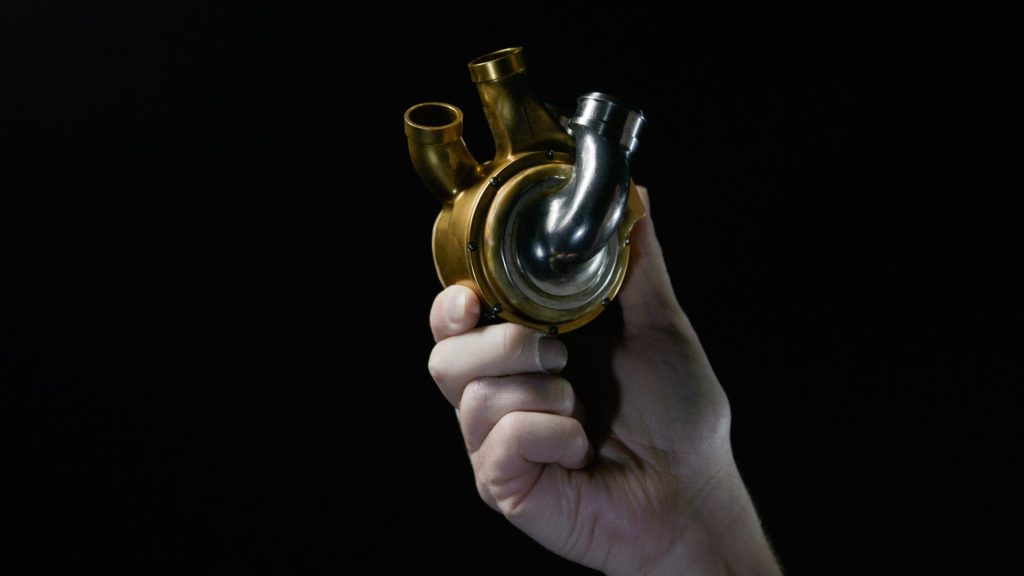Seeking to improve heart transplant technology, healthcare innovators have come up with a metal-based device that looks and functions like a heart, called a total artificial heart (TAH), developed by the company BiVACOR.
It has been hailed as a “bridge-to-transplant solution” for patients with severe biventricular or univentricular heart failure – conditions for which medical professionals would not recommend support with a left ventricular assist device.
yesterday [July 25, 2024]The Texas Heart Institute (THI), in collaboration with BiVACOR, announced the first successful human implantation of a BiVACOR total artificial heart (TAH).
The first implantation of the BiVACOR TAH in humans took place on July 9, 2024, at Baylor St. Luke’s Medical Center in the Texas Medical Center as part of a U.S. Food and Drug Administration (FDA) Early Feasibility Study (EFS).
It consists of a titanium biventricular rotary blood pump.
According to a statement from the Texas Heart Institute, the artificial heart consists of a titanium, biventricular rotary blood pump with a single moving part that utilizes a magnetically levitated rotor.
The rotor pumps blood, replacing both ventricles of a failing heart.
according to New AtlasThis artificial heart uses the same technology as high-speed trains and is now implanted inside the human body.
The device is not intended to replace the heart completely, but only while the patient waits for an actual heart transplant.
Daniel Timms, BiVACOR founder and CTO, said the TAH utilized advanced magnetic levitation technology.
“TAH brings us one step closer to providing a much-needed option for people with end-stage heart failure who need support while they wait for a heart transplant,” he said.
“We look forward to continuing the next phase of clinical trials.”
First use of magnetic levitation technology in an artificial heart
This is not the first artificial Heart transplantation However, this was the first time that scientists had used magnetic levitation (maglev) technology.
Magnetic levitation technology uses a magnetic field to suspend and spin a rotor without physical contact, reducing friction and mechanical wear, improving the durability and reliability of mechanical devices.
Magnetic levitation enables the BiVACOR TAH to efficiently pump blood to each chamber of the heart with a single moving part (the rotor), providing a smoother, more biocompatible alternative to traditional mechanical pumps that rely on multiple moving parts and mechanical valves.
This technology aims to minimize blood damage and improve overall performance. Artificial Heart.
The study was designed to evaluate the safety and performance of the BiVACOR TAH in patients with heart failure, the leading cause of death worldwide. 26 million people worldwideand 6.2 million U.S. adults
“This is a very exciting time for our patients,” said Dr. Joseph Rogers, president and CEO of the Texas Heart Institute and national lead investigator on the study.
“We are proud to be at the forefront of this medical advancement, working with the dedicated teams at BiVACOR, Baylor College of Medicine and Baylor St. Luke’s Medical Center to transform the future of heart failure care for this vulnerable population.”
According to the institute, the US National Institutes of Health estimates that up to 100,000 patients could immediately benefit from mechanical circulatory support (MCS), and the European market is similarly sized.
About the Editor
Shubhangi Dua As an eccentric and imaginative multimedia journalist with a Masters in Magazine Journalism, I am constantly coming up with fresh ideas and finding innovative ways to tell stories. I have dabbled in various media fields, from holding the pen as a writer, to capturing moments as a photographer and even strategizing on social media. With a creative mind and attention to detail, I have worked in the dynamic field of multimedia journalism and written on sports, lifestyle, arts, culture, health and wellbeing for Further Magazine, Alt.Cardiff and The Hindu. I am on a mission to create a media landscape that is as diverse as a Spotify playlist. From India to Wales and now England, my journeys have been full of adventures that inspire me to paint, cook and write.


